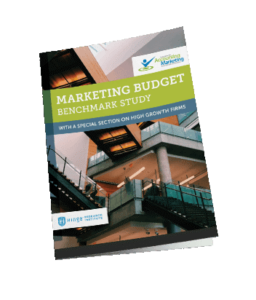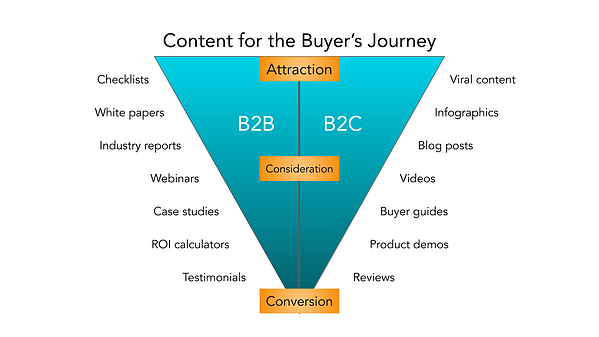SEO Guides, Tips & More!
Learn from Our Experience
High-Growth CPA Firms to Increase Digital Marketing Spending
The end of the year is a time when most accounting firm marketers are budgeting and planning for the following months. Conscientious marketers will be working with their teams and managing partners to assess what worked well in 2019, what was worth the expense (even if the result wasn’t as expected), and where to focus time, energy, and dollars in 2020.
Members of the Association for Accounting Marketing know by now that Hinge releases a Marketing Budget Benchmark Study based on industry research. This is a great tool that can inform accounting firms about industry trends and what comparably-sized firms are doing, as well as what’s working well for the high-growth firms – the ones that experience double-digit growth. We won’t dive into the specifics, so marketers that want the full report for themselves can purchase and download it here.

What we do want to focus on is the rise in SEO and digital marketing and what that looks like for accounting firms and their budgets in 2020. Here are the main takeaways, from our perspective:
- 56% of accounting firms surveyed are currently allocating marketing dollars for SEO
- 39% are currently allocating marketing dollars for Pay Per Click ads
- 31% are currently allocating marketing dollars for other online ads, like Google Ads
- Website expenses, including SEO, make up less than 8% of total marketing budgets, and technology sits at 3%
What do these numbers mean, and how do they compare with other B2B companies?
Many accounting firms seem to structure their marketing budgets heavily around “that’s the way we’ve always done it” and as a result, many are then spending money on tactics that are just not that effective. The budget benchmark study also revealed that high-growth accounting firms spend over TEN PERCENT MORE on digital marketing and less on everything else.
Outside of public accounting – where it’s very helpful to look for innovative marketing and growth ideas – the typical B2B company is faring much better for marketers: 7-8% of total marketing expenses, for one thing, which would be unheard of in public accounting (other studies are more conservative, with estimates ranging from 2-4%). Further, other industries are expected to spend almost half of their entire marketing budget on digital. SEO strategy remains a priority for private companies too, as well as tools to automate marketing, create meaningful blogs and other content.

More than a quarter of marketing professionals are shifting budget dollars to digital. Digital marketing can also include social media, upgrading the website, PPC, banner ads, content marketing, and email marketing. While not all marketing dollars are going straight to SEO, but it’s important to mention that any digital campaign works best when it’s one piece of an integrated marketing puzzle. Just like in accounting, perhaps two of the reasons why SEO hasn’t been a major player in digital marketing strategy until now is due to a lack of understanding about how it actually functions, combined with the instant gratification of wanting to see results right away.
What does SEO do for top-line revenue growth?
This is a fair question. Because SEO occurs behind the scenes, it can be hard to connect the dots unless sophisticated tracking and analytics can reveal whether a new client came on board as a direct result. It’s also a question we get from marketers who need to answer to managing partners, who don’t have as firm a grasp on marketing techniques. First, a helpful primer on what SEO is for marketers who need to explain it to their partners.
Search engine optimization is a coordinated process of changing and upgrading a website’s content – and in some cases, design – to make it easier for Google and other search engines to pull that content and put it higher on the search engine results page, or SERP listing. The higher a website appears in Google’s SERP, the more likely John Smith, CEO is going to click on it. It’s like a digital PR campaign; firms don’t pay for the organic traffic they get to their website, nor do they pay for media mentions when a partner is quoted in an industry journal.
Sometimes, there are simple changes we make to websites to increase search rankings, like adding the right keywords in the right places. Other times, we work with marketing teams to retool existing content so it meets different goals in the sales funnel. Check out our previous blog posts on user intent and voice search and other SEO trends for more context.
There can also be more complex algorithms and data schemas we apply to website construction, and then there’s tracking and analytics – because why bother putting all the time and effort into an SEO strategy if no one can tell whether it’s working? The best SEO strategy involves many different moving pieces, all working together, and ideally coordinated by a specialist with multiple skill sets who understands how Google algorithms affect websites.
This post on SEO Basics for Accounting Marketers should also help.
Now, what about SEO’s impact? For one company, they were able to attribute about 34% of new business to SEO. Another company saw a 25% increase in organic web traffic. This is the one result that partners care about the most, but use some degree of caution. We recommend tracking the amount of quality leads generated rather than new business closed. We say this because it’s not SEO’s responsibility, or the marketing team in most cases, to close new business. In most firms, that should fall on the partners themselves, who are hopefully enthusiastic about a warm lead.

Other ways that SEO can make an impact include:
- Organic web traffic increase
- On Google Analytics, check to see the number and frequency of web searches that don’t include the firm name.
- High-quality web traffic increase
- To measure high-quality web traffic, marketers should look at the website’s bounce rate; it should decrease with more relevant visitors. Also assess the number of goal conversions, like form completions.
- More Google Alerts
- Set up Google Alerts for the firm name and other content keywords the marketing team wants to track. What should happen over time is that the number of Alerts will increase as Google indexes more of that content from the site.
2020 Marketing Budget Trends and Predictions
What is interesting is that accounting firm marketing budgets are still, by and large, stuck in the Dark Ages of sponsorships, networking events, charitable giving, and traditional advertising. That’s not to say these tactics don’t work or that they’re invaluable, but if a marketing director has less than two percent of firm revenue to spend on marketing, it would make more sense to put dollars where they’re going to have the most impact.
In 2020, 60% of accounting firm marketers recommend increasing the budget for SEO, according to the Hinge study. Keep in mind that the most successful SEO campaign will invariably include other elements, like PPC, social sharing, and external linking strategies.
Content should also be optimized for SEO. It’s a good idea to design and write content for different stages of the sales funnel, and this graphic from HubSpot nails the goals of content creation perfectly.

What’s Next?
We know that sometimes the marketing budget is out of marketing’s hands almost entirely. In these cases, it can really become a challenge for a firm to stay competitive and relevant when the marketing director wants to pursue new initiatives but is getting pushback from other stakeholders. The good news is there are still proactive steps that firms can take that don’t cost any money!
When the marketing team makes the decision to invest more resources in SEO and digital marketing, a good place to start is by identifying the keywords the firm wants to target. Make sure to include local search terms and consult Google Trends to assess keyword search volume over the past year.

A couple of notable highlights when using Google Trends:
- Notice how two different keywords can be compared. This is really useful to determine which one to include in higher-profile locations, like page titles.
- Without inputting local search terms, data drilled down to states, territories, and other countries helps firms with multiple offices see what’s trending in their region.
- In looking at Interest Over Time, try to see if there’s a seasonality trend with the keyword, if it’s tied to external events, and so on.
- Finally, notice that Google Trends provides related queries and whether that search term is on the rise.
Other SEO tips that don’t require any money, only time, to implement include tagging page titles, page descriptions, and page headings as well as adding descriptive text for images and appropriate keyword saturation.
So, when most marketers are saying their biggest challenge is generating the right kind of web traffic and online leads, why wouldn’t we invest in SEO and digital?
The right SEO strategy helps to expand an accounting firm’s geographic presence, open up access to warmer and more qualified leads, and improve online brand awareness. The level of SEO investment looks different for each firm, but one thing is clear: the future is digital. Make sure the 2020 marketing budget reflects that!
Let us know …
What’s in your accounting firm’s 2020 marketing budget? Will you be investing more in digital marketing?

